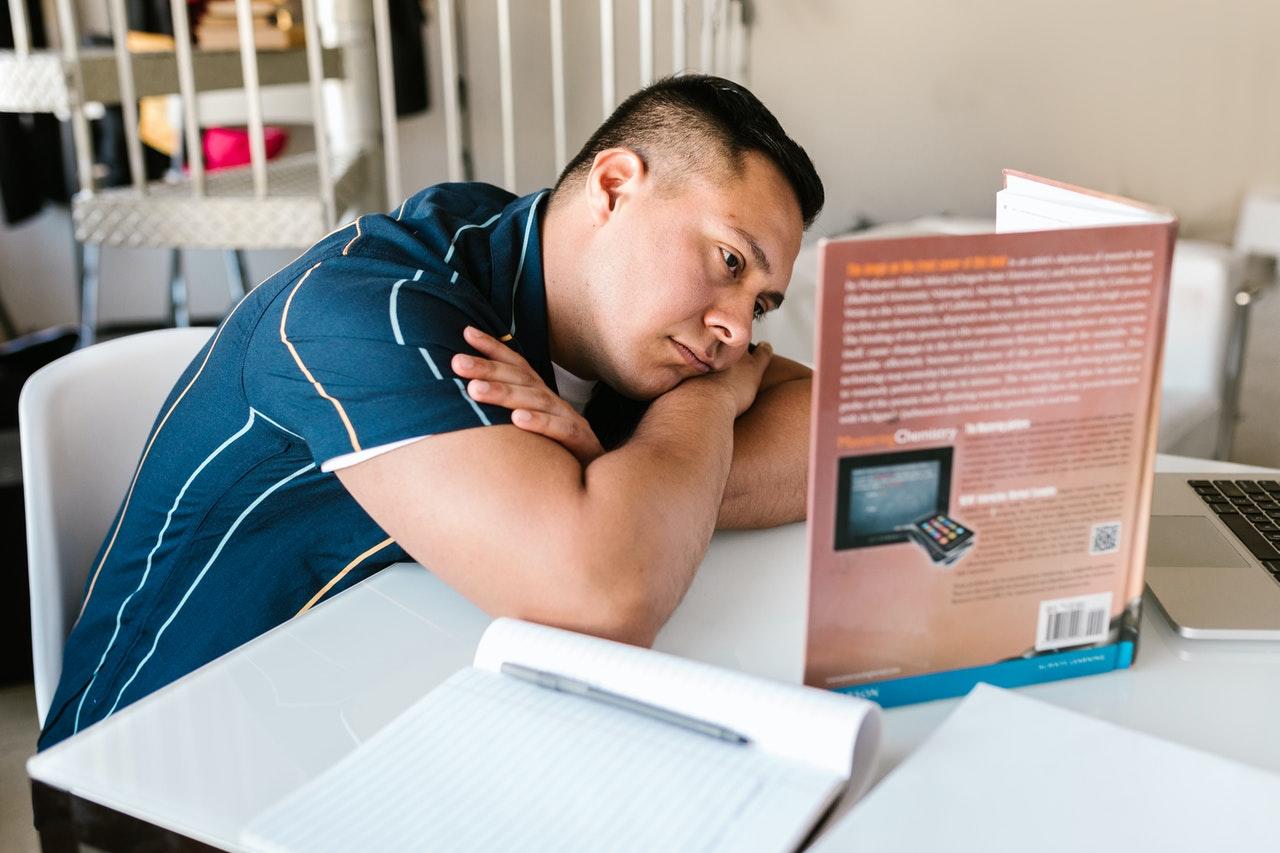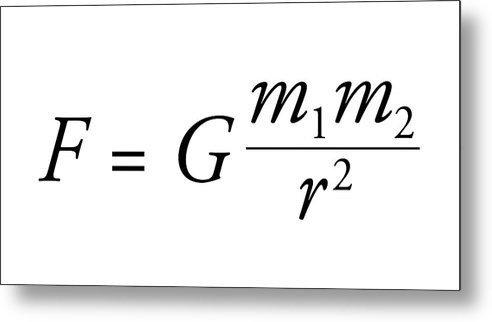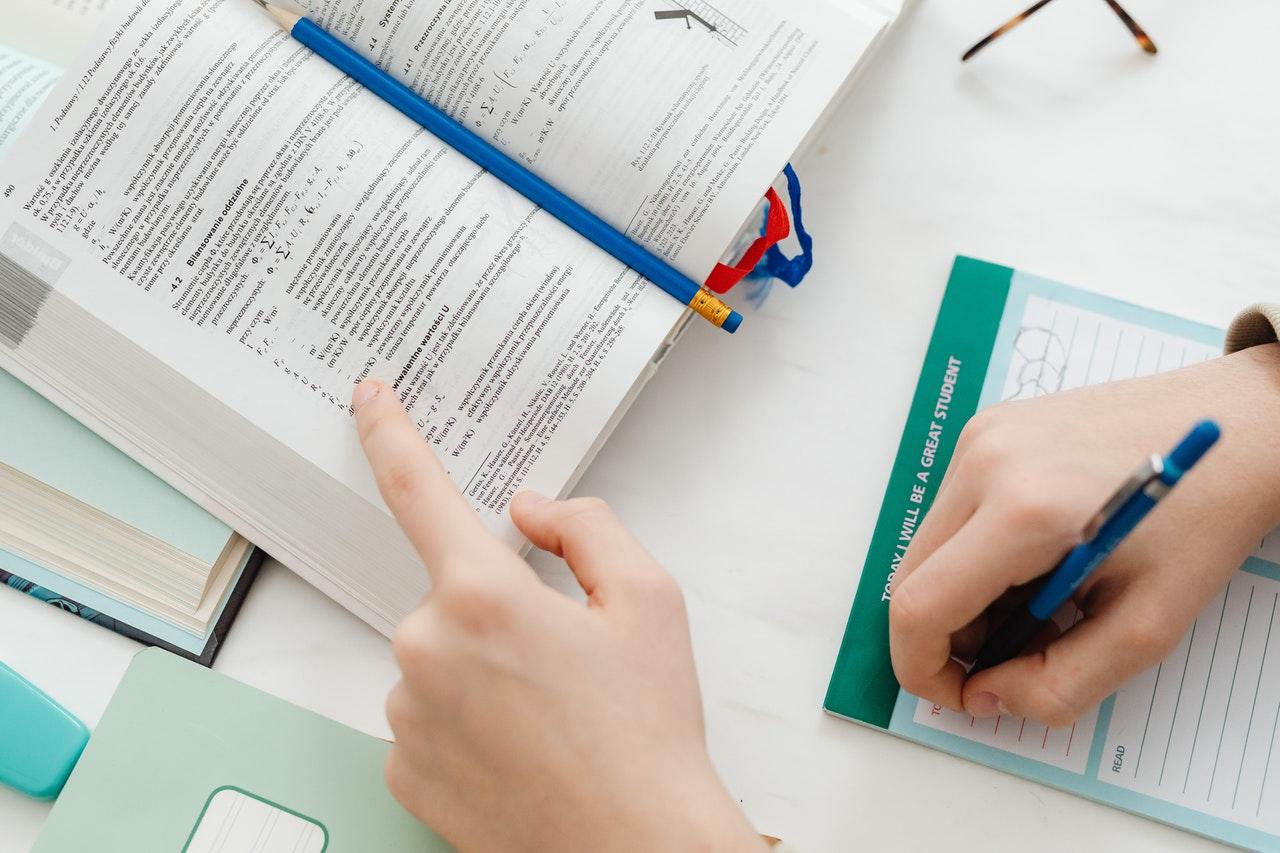One of the most common myths that most of us have on studying Physics is this:
More calculation, less memorization.
Hmmm, it's probably not 100% accurate.
Not everyone gets E=mc2 at one go.
You'll have to read, analyse, and understand various definitions of physics concepts and then explain them in simple words and sentences before going into the formulas, equations and complex calculations.
If you are currently a Form Six student or SPM leaver who is preparing for your Form Six studies and planning to register for STPM Physics, this article is for you!
Continue reading to find out the topics that you will study each term, how will you be evaluated and where to find the right resources and tutors to ace this subject.

Which Topics Will You Study For STPM Physics Semester 1?
As mentioned earlier, Physics is more than just putting in the figures and calculating.
Do expect a lot of reading in the 1st semester for STPM Physics as it sets the tone and foundation of the following chapters in the coming semesters.
You will sit for Physics Paper 1 [960/1], the duration is 1 hour and 30 minutes. Total mark: 60m.
Under the theme of Mechanics and Thermodynamics, you will study a total of 11 chapters.
- Chapter 1: Physical Quantities and Units
- Chapter 2:Kinematics
- Chapter 3:Dynamics
- Chapter 4:Work, Energy and Power
- Chapter 5:Circular Motion
- Chapter 6:Gravitation
- Chapter 7:Statics
- Chapter 8:Deformation of Solids
- Chapter 9: Kinetic Theory of Gases
- Chapter 10:Thermodynamics of Gases
- Chapter 11:Heat Transfer
Don't worry, there are fewer chapters in Semester 2 and Semester 3, we promise.

Source: Photo by RODNAE Productions from Pexels
What Themes Will You Be Tested In STPM Physics Semester 2?
Welcome to Semester 2!
You will sit for Physics Paper 2 [960/2], the duration is 1 hour and 30 minutes. Total mark: 60m.
For this semester, you will explore the following chapters under the theme of Electricity and Magnetism.
- Chapter 12: Electrostatics
- Chapter 13: Capacitors
- Chapter 14: Electric Current
- Chapter 15: Direct Current Circuits
- Chapter 16: Magnetic Fields
- Chapter 17: Electromagnetic Induction
- Chapter18: Alternating Current Circuits
Explore some revision resources such as past STPM Physics papers here.

How To Prepare For Topics And Group Project In Semester 3?
It's the final semester and you're almost there!
You will sit for Physics Paper 3 [960/3], the duration is 1 hour and 30 minutes. Total mark: 60m.
Let's have a look at the chapters for the theme of Oscillations and Waves, Optics and Modern Physics.
- Chapter 19: Oscillations
- Chapter 20: Wave Motion
- Chapter 21: Sound Waves
- Chapter 22: Geometrical Optics
- Chapter 23: Wave Optics
- Chapter 24: Quantum Physics
- Chapter 25: Nuclear Physics
Apart from the usual written test on the given theme for semester 3, you will also be carrying out a coursework project with your group members in the same semester.
Every year, MPM will come out with a new topic for your coursework project.
You will then write a complete report and present the findings together (Eg: Powerpoint) with your group members. in front of your subject teacher to be assessed.
Here is some example of elements that you must include in your coursework project report and presentation:
1)Title
2)Table of Content
3)Introduction
4)Background
5)Literature Study
7)Theory
8)Problem Statement
9)Objectives
10)Methodology
11)Apparatus And Materials
12)Procedures
13)Data Collection
14)Findings
15)Analysis
16)Conclusion
You can look up some of the previous coursework projects online to see how they are done (structure and presentation).
You can also explore more about the examination format for STPM in this article.
Why You Should Aim for A High Score For School-based Assessment of Practical For STPM Physics?
Thankfully, your entire STPM Physics grade is not solely dependent on the usual central assessments.
Yes, you still have to answer objective, subjective and essay questions for each term (theory-based).
But when it comes to the three Science subjects, it is compulsory to have practical assessments.
To me, what makes Physics Physics is that experiment is intimately connected to theory. It's one whole.
-Danish physicist, Lene Hau
Here are some of the learning objectives that you are expected to achieve at the end of your school-based Physics practical course for STPM.
- The ability to plan and carry out experiments using appropriate methods.
- The ability to make observations, to take measurements and to record data with attention given to precision, accuracy and units.
- The awareness of the importance of checking readings and repeating readings
- The awareness of the limits of accuracy of observations and measurements.
- The ability to interpret, analyse and evaluate observations, experimental data, perform error analysis and make deductions.
- The awareness of the safety measures which need to be taken.
Read further to know why it can be a breeze to have a full score for your Physics practical assessments.
a) You will have sufficient time to prepare and answer them accurately
Bear in mind that the 13 compulsory experiments will be conducted throughout the 3 semesters. Both teachers and students will be provided with a manual that details the relevant information on the experiments.
A proper work scheme will be provided to you before the day of the compulsory experiment to enable you to plan beforehand (prepare apparatus and procedures etc).
You could even do a trial test run of the experiments after reviewing the manual for the upcoming semesters.
Think of this as an open book test, but in the practical sense.
b) Some experiments can be done in pair
With quite a number of experiments to conduct, it is a relief to have a partner with you.
When it comes to brainstorming, the planning of experiments, measuring and calculating up till the final reporting, your work can be done in a more effective manner.
You'll get another pair of eyes to double-check for the accuracy or potential mistakes and reduce the amount of nervousness.
Remember, two is better than one.

Source: Photo by Pavel Danilyuk from Pexels
c) It will increase your grade for each semester and overall CGPA
As a former Form Six Science Stream student, I can 100% confirm that practical assessments are life-savers.
I remember receiving the maximum score for my practical assessments and it helped to increase my grade significantly every semester.
Never ever underestimate the weightage of your practical assessments [20%].
Every mark counts when it comes to shifting an A- to an A.
Where To Find Tips And Techniques For Your STPM Physics?
Let's face it. It's important to know the right way to score for any examination.
What separates a Grade A and a Grade A-?
What do examiners actually look for in your answers?
You'll need the proper guidance and some tips on the real marking scheme to ace your STPM Physics.
Here are two suggestions for you to gain useful studying and answering tips for this subject.
a) Through Youtube -Didik TV Road To Success STPM
At Didik TV, you'll be able to assess a variety of videos on various subjects anytime and anywhere you want.
You will find videos of teachers explaining in detail the structure of the papers for each semester as well as the common mistakes that students usually make during examinations.
For instance, the teacher will share some tips to answer the questions accurately according to the mark allocation.
Question example: Define/State a physics concept.
The accepted answers are in two forms:
- In mathematical form with every term explained.
- In full words and sentence
Let's look at a sample question:
State Newton’s law of universal gravitation.
i)Required answer in words and sentence:
The first method is through a straightforward sentence.
It is a law stating that any two masses attract each other with a force equal to a constant (called the gravitational constant) multiplied by the product of the two masses and divided by the square of the distance between them.
ii)Required answer in mathematical form with every term explained:
Another method is this.
You can present your answer in the form of the formula (as shown in the image below) with additional notes.

Source: Quora.com
Underneath the formula, you have to list the information down:
- F = force of the moving object
- G = gravitational constant
- m_1 = mass of object 1
- m_2 = mass of object 2
- r = distance between centres of the masses
b) Learn From A Superprof Physics Tutor
Even though it's great to learn from Youtube, it is even greater to have a Physics tutor that can respond immediately to your questions and correct you on the spot!
Wondering where to look for a qualified Physics tutor?
Look no further than Superprof!
At Superprof, you can easily review and compare many tutors' profiles at a glance.
You get to customize your learning experience according to your preferred learning mode (home/online tutoring), maximum budget, preferred teaching experience, tutor's qualification, teaching methodology and many more.
What's best is that most tutors offer their first lessons for free, so you don't have to worry about over-committing from the beginning.
We encourage you to see how you can benefit from private tutoring in the long run.
A Superprof Physics tutor can provide you with a consistent and comprehensive learning plan to combat your STPM Physics!
For instance, you will be taught ways to memorize and connect various concepts, key quantities and units and perform calculations involving these quantities as indicated in the syllabus.
Some examples include:
- Power
- Pressure
- Latent heat
- Speed
- Velocity
- Electric charge
- Distance
- Energy
- and many more
You'll be given ample revision exercises and useful learning resources to improve for each topic and each semester.
We do understand that preparations for STPM can be overwhelming and lonely if you insist to study on your own.
As every student has a different learning curve, having a Physics tutor gives you the assurance that you are setting on the right track and gradually making progress.
What are you waiting for?
Head to the Superprof Malaysia website to find a STPM Physics tutor now!















